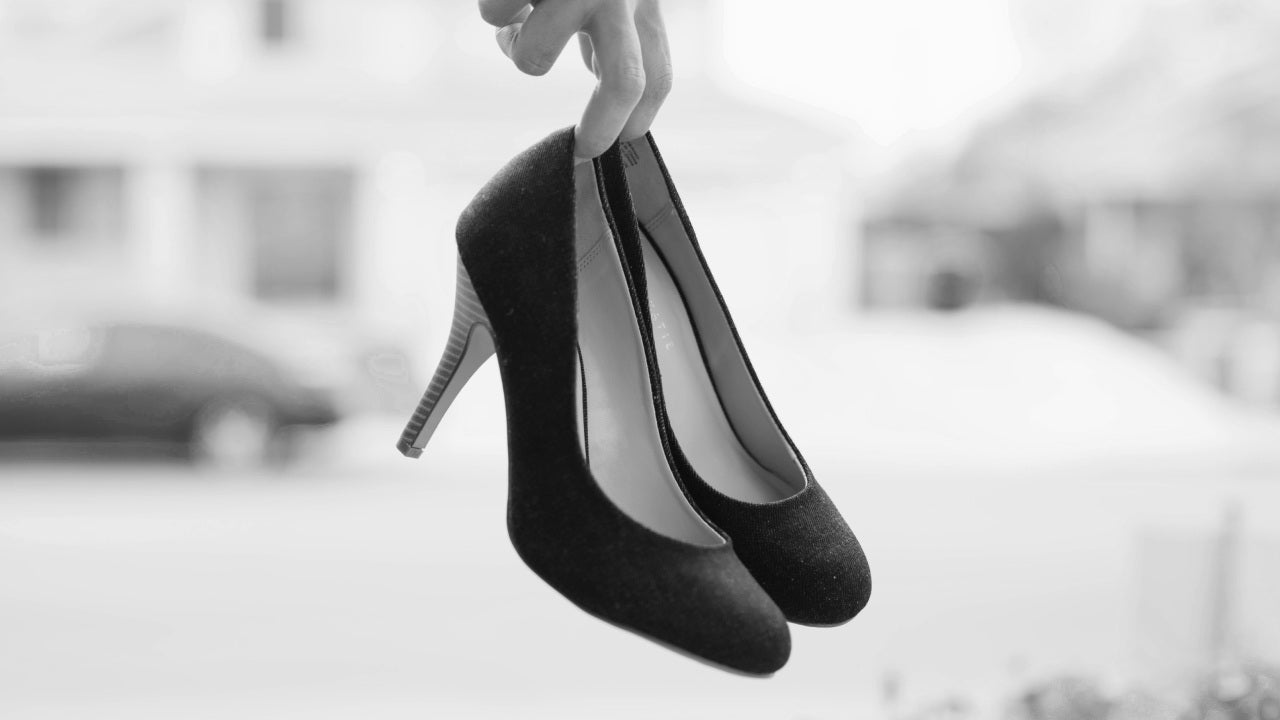
After a night in heels, your feet might wake up feeling sore, stiff, and a bit swollen. Many of us know the struggle of dealing with discomfort that makes even a short walk challenging. It can be frustrating when the relief options seem limited and time‐consuming, especially when you're eager to kick off your day without pain. Fortunately, there are simple, practical methods you can use right at home to ease the discomfort and get back on your feet. Whether you're dealing with sharp aches or persistent soreness, taking a few minutes for proper foot care can make a real difference.
Read on to explore easy steps that help soothe your feet after a long day in heels.
Quick Fixes for Heel Pain Relief After Wearing Heels
Ever stepped out of your favorite heels and felt like your feet are screaming? You're not alone. Heel pain can turn a night of glamour into a morning of misery. The key is immediate, strategic relief.
Start with a targeted massage using a tennis ball or frozen water bottle. Roll the ball under your heel for 3-5 minutes, applying gentle pressure to release tension and reduce inflammation. The cold helps numb pain while the rolling motion breaks up muscle knots.
Quick relief techniques include:
- Ice massage for 10-15 minutes
- Gentle stretching of the arch and heel
- Elevating your feet above heart level
- Taking an anti-inflammatory if needed
Pro tip: Keep a small massage ball in your bag for instant relief after long events or extended heel-wearing sessions.
Effective Stretches for Ball-of-Foot Pain
Your metatarsal region takes a serious beating in high heels. These targeted stretches can help restore mobility and reduce sharp, burning sensations.
Start with a seated toe stretch: Sit down, extend one leg, and gently pull your toes toward your body. Hold for 30 seconds, feeling the stretch along the bottom of your foot. Repeat on both sides.
Key stretches include:
- Plantar fascia stretch
- Toe extensions
- Ankle rotations
- Calf muscle lengthening
Focus on slow, controlled movements. Never push into pain—a gentle tension is the goal. If you're dealing with persistent pain, it's important to know what not to do with plantar fasciitis to avoid exacerbating the issue.
How to Reduce Swelling and Inflammation at Home
Swollen feet are more than just uncomfortable—they're a sign your body needs recovery. Create a multi-step approach to reduce inflammation and promote healing.
Recommended protocol:
-
Cold Therapy (first 48 hours):
- Apply ice for 15-20 minutes (wrap in a thin towel).
- Use compression socks for additional support.
-
Elevation Techniques:
- Raise your feet above heart level using pillows for support.
-
Gentle Movement:
- Engage in light walking and ankle rotations to stimulate blood flow.
Consider incorporating natural anti-inflammatory foods like turmeric, ginger, and omega-3 rich fish to aid internal healing.
Everyday Exercises to Strengthen Your Feet
Strong feet are resilient feet. These targeted exercises build the muscular support needed to handle high-heel stress.
Toe-grip exercises:
- Pick up small objects with your toes
- Towel scrunches
- Marble pickup exercises
Stability work:
- Single-leg balance exercises
- Heel raises
- Arch strengthening exercises
Consistency is key—aim for 10-15 minutes daily to build foot strength and flexibility. For additional support, consider using insoles designed for orthotic pain relief.
Why You Should Wear Recovery Shoes After a Night on High Heels
Your feet deserve serious TLC after enduring hours in elevated shoes. Recovery footwear isn't just about comfort—it's a strategic investment in your foot health.
Look for shoes that offer:
- Arch support
- Cushioned soles
- A flexible design
- Breathable materials
These features help restore natural foot posture and reduce the impact of pressure accumulated during heavy heel wear. For optimal comfort, consider adding a comfort pain relief insole to your recovery shoes.
If You Have to Wear Heels, Here's What to Look For
Not all heels are created equal. Strategic selection can minimize potential foot damage.
Ideal heel characteristics include:
- Maximum heel height of 2-3 inches to reduce strain
- A sturdy, wide heel base for better stability
- Quality arch support
- A cushioned insole for added comfort
- High-quality, flexible materials
Consider alternating heel heights and incorporating supportive inserts for added protection. If you're looking for footwear that's both stylish and supportive, explore our selection of orthotic pain relief shoes. For everyday walking, you might also want to consider whether running shoes are a good option for walking long distances.
Final Thoughts
Navigating foot pain after wearing heels isn't just about temporary relief—it's about understanding your body's resilience and recovery. The strategies we've explored aren't quick fixes, but practical approaches to supporting your feet through daily challenges. Each stretch, massage, and recovery technique is a small investment in your overall physical well-being.
Foot health is fundamentally about maintaining your body's foundation. Just as athletes carefully prepare for peak performance, treating your feet with consistent care becomes a ritual of self-preservation. The methods discussed here aren’t complicated—they’re practical, accessible ways to listen to what your body needs.
Remember that recovery isn't a passive process; it's an active commitment to maintaining your body's strength and mobility. By understanding your feet's unique needs and responding with thoughtful care, you're building a more resilient foundation for every step you take—whether in heels or athletic shoes.
At Oliver Cabell, we understand the challenges athletes face with foot health, which is why we’re committed to designing orthopedic shoes that support every step. Our thoughtfully designed footwear, featuring arch support and cushioned soles, complements the techniques discussed here by providing long-term comfort and protection. By combining these recovery methods with footwear designed for foot health, you can take a proactive approach to preventing future discomfort and maintaining healthy, resilient feet.